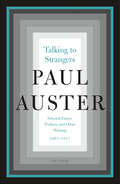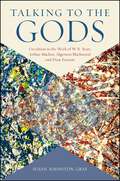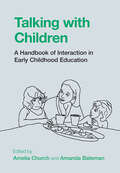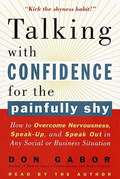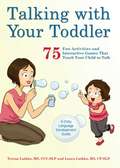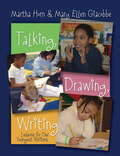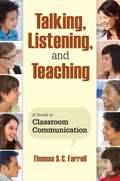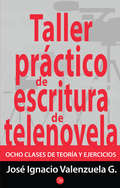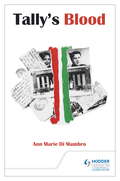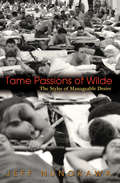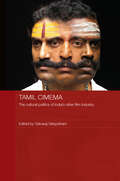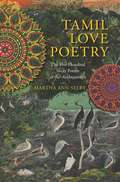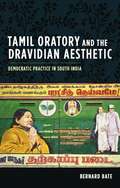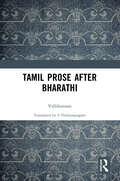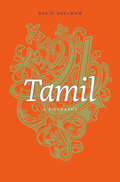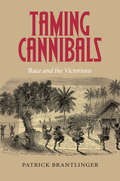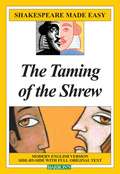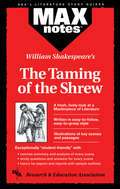- Table View
- List View
Talking to Strangers: Selected Essays, Prefaces, and Other Writings, 1967–2017
by Paul AusterIncludes new early writings: &“This vibrant collection fully displays Auster&’s wit and humanity . . . a fascinating glimpse into the mind of a celebrated author.&” —Publishers Weekly (starred review) Beginning with a short philosophical meditation written when he was twenty and concluding with nine political pieces that take on such issues as homelessness, 9/11, and the link between soccer and war, the forty-four pieces gathered in this volume offer a wide-ranging view of celebrated novelist Paul Auster&’s thoughts on a multitude of classic and contemporary writers, the high-wire exploits of Philippe Petit, how to improve life in New York City (in collaboration with visual artist Sophie Calle), and the long road he has traveled with his beloved manual typewriter. While writing for the New York Review of Books and other publications in the mid-1970s, young poet Auster gained recognition as an astute literary critic with essays on Laura Riding, John Ashbery, Samuel Beckett, Franz Kafka, Paul Celan, and others. By the late seventies and early eighties, as the poet was transforming himself into a novelist, he maintained an active double life by continuing his work as a translator and editing the groundbreaking anthology The Random House Book of Twentieth-Century Poetry. His prefaces to some of these books are included in Talking to Strangers, among them a heart-wrenching account of Stéphane Mallarmé&’s response to the death of his eight-year-old son, Anatole. In recent years, Auster explored the work of American artists spanning periods and disciplines: the notebooks of Nathaniel Hawthorne, the films of Jim Jarmusch, the writings of painter-collagist-illustrator Joe Brainard, and the three-hit shutout thrown by journeyman right-hander Terry Leach of the Mets. Also included here are several rediscovered works originally delivered in public: a 1982 lecture on Edgar Allan Poe, a 1999 blast against New York mayor Rudolph Giuliani, and one of the funniest introductions a poetry reading ever heard in the state of New Jersey. A collection of soaring intelligence and deepest humanity including never-before-published material, Talking to Strangers is an essential book by &“the most distinguished American writer of [his] generation . . . indeed its only author . . . with any claim to greatness&” (The Spectator).
Talking to the Gods: Occultism in the Work of W. B. Yeats, Arthur Machen, Algernon Blackwood, and Dion Fortune (SUNY series in Western Esoteric Traditions)
by Susan Johnston GrafTalking to the Gods explores the linkages between the imaginative literature and the occult beliefs and practices of four writers who were members of the Hermetic Order of the Golden Dawn. William Butler Yeats, Arthur Machen, Algernon Blackwood, and Dion Fortune were all members of the occult organization for various periods from 1890 to 1930. Yeats, of course, is both a canonical and well-loved poet. Machen is revered as a master of the weird tale. Blackwood's work dealing with the supernatural was popular during the first half of the twentieth century and has been influential in the development of the fantasy genre. Fortune's books are acknowledged as harbingers of trends in second-wave feminist spirituality. Susan Johnston Graf examines practices, beliefs, and ideas engendered within the Hermetic Order of the Golden Dawn and demonstrates how these are manifest in each author's work, including Yeats's major theoretical work, A Vision.
Talking with Children: A Handbook of Interaction in Early Childhood Education
by Amanda Bateman Amelia ChurchEarly childhood teachers know that the quality of child-teacher interactions has an impact on children's social and educational outcomes. Talking with children is central to early learning, but the significant details of high quality conversations in early childhood settings are not always obvious. This Handbook brings together experts from across the globe to share evidence of teachers talking with children in early learning environments. It applies the methodology of conversation analysis to questions about early childhood education, and shows why this method of studying discourse can be a valuable resource for professional development in early childhood. Each chapter of this Handbook includes an up-to-date literature review; shows how interactional pedagogy can be achieved in everyday interactions; and demonstrates how to apply this learning in practice. It offers unique insights into real-life early childhood education practices, based on robust research findings, and provides practical advice for teaching and talking with children.
Talking with Confidence for the Painfully Shy: How to Overcome Nervousness, Speak-Up, and Speak Out in Any Social or Business Situation
by Don Gabors much about "speaking in public" as it is about "public speaking, " Talking with Confidence for the Painfully Shy can help even the most shy person speak up and speak out in any business or social situation.
Talking with Your Toddler: 75 Fun Activities and Interactive Games that Teach Your Child to Talk
by Teresa Laikko Laura LaikkoA HANDY PARENT'S GUIDE THAT TURNS PROFESSIONAL LANGUAGE DEVELOPMENT INTO CHILD'S PLAYAre you concerned that your child is not verbalizing? The solution may be as simple as a game. Talking with Your Toddler teaches you how to stimulate speech using everyday play. It makes learning to talk fun and engaging for your child.With proven therapies and easy-to-follow activities, Talking with Your Toddler makes an ideal home companion.- Tips to promote talking throughout the day- Hands-on games that teach new words- Tricks for turning drive time into talk time- Fun ways to promote further practice- Techniques for keeping kids engagedWritten by experienced speech professionals, this book&’s straightforward approach is equally useful for parents at home, teachers in the classroom or therapists in a clinic.
Talking, Drawing, Writing: Lessons for Our Youngest Writers
by Martha Horn Mary GiacobbeIn the early grades, talking and drawing can provide children with a natural pathway to writing, yet these components are often overlooked. In Talking, Drawing, Writing: Lessons for Our Youngest Writers , authors Martha Horn and Mary Ellen Giacobbe invite readers to join them in classrooms where they listen, watch, and talk with children, then use what they learn to create lessons designed to meet children where they are and lead them into the world of writing. The authors make a case for a broader definition of writing, advocating for formal storytelling sessions, in which children tell about what they know, and for focused sketching sessions so that budding writers learn how to observe more carefully.The book's lessons are organized by topic and include oral storytelling, drawing, writing words, assessment, introducing booklets, and moving writers forward. Based on the authors' work in urban kindergarten and first-grade classes, the essence and structure of many of the lessons lend themselves to adaptation through fifth grade. The lessons follow a consistent format: What's going on in the classroom? What do children need to learn next? Materials needed to teach the lesson Language used in each lesson Reasons behind why certain books are chosen and suggestions for additional children&’s books The authors show the thinking behind their teaching decisions and provide a way to look at and assess children's writing, giving us much more than a book of lessons; they present a vision of what beginning writing can look and sound like. Perhaps most powerfully, they give us examples of the language they use with children that reveal a genuine respect for and trust in children as learners.
Talking, Listening, and Teaching: A Guide to Classroom Communication
by Thomas S. FarrellTalking, Listening, and Teaching demonstrates how important it is for teachers to understand and monitor classroom communication patterns and resolve problems that may hamper students' learning. Using examples from real classrooms, the author explainsHow classroom talk is different from communication outside the classroomHow to gather and analyze data about classroom talkWhat type of questioning generates good discussionsWhy and how to give feedback to studentsHow nonverbal communication impacts the classroomThis insightful guide to classroom communication, featuring provocative "Thinking About Your Own Classroom" questions, is ideal for teacher study groups and benefits educators who wish to effectively manage this important aspect of teaching and learning.
Taller práctico de escritura de telenovela: Ocho clases de teoría y ejercicios
by José Ignacio ValenzuelaManual de José Ignacio Valenzuela para la realización de telenovelas. De Ignacio Valenzuela, seleccionado por la revista About.com de The New York Times como uno de los 10 mejores escritores latinoamericanos menores de 40 años, cuenta con varios libros juveniles publicados de corte policiaco. Su novela Malamor fue postulada al Premio Altazor. Una herramienta para comprender mejor qué son las telenovelas. Con claridad en la exposición y afán didáctico el novelista y afamado escritor de telenovelas José Ignacio Valenzuela nos muestra a través de ocho clases prácticas con conceptos y ejemplos reales, los entresijos de la creación del género televisivo de más éxito global. Además nos ofrece un práctico glosario de términos, una bibliografía muy completa, una serie de links de interés, así como un listado de todas las telenovelas mencionadas. A modo de manual con varios ejercicios y de forma ágil, el autor muestra el cómo y el porqué de las telenovelas, cuáles son sus diferencias, cómo ha sido su evolución, hacia dónde va un género que ha sido parte de nuestra educación sentimental y es el único entretenimiento de millones de personas en todo el mundo.
Tally's Blood
by Ann Marie MambroExam Board: SQALevel: National 4 & 5Subject: EnglishFirst Teaching: September 2013First Exam: June 2014As well as being a highly popular play for National 5 English study, Tally's Blood paints a wonderful picture of life in wartime Scotland, as experienced by the Italian immigrant community. Exploring the themes of racism, love and family loyalties, it does so with humour and warmth through the eyes of an Italian family with close blood ties. When World War Two breaks out, friendships outwith the family are sorely tested by the difficulties of wartime prejudice.- One of the set drama texts for National 5 English- Written by a very successful playwright and television screenplay writer
Tame Passions of Wilde: The Styles of Manageable Desire
by Jeff NunokawaWhat if our strongest urges could be divested of their power to compel yet retain their power to fascinate us? What if our most basic appetites could be translated from the realm of bodily necessity to the sphere of artistic freedom? Jeff Nunokawa traces the variety of social pressures that inspired Oscar Wilde's lifelong effort to concoct forms of desire that thrill without menacing us, as well as the alchemies by which he sought to do so. Assigning Wilde a place of honor in a heady company of thinkers drawn from the ranks of philosophy, sociology, economics, psychoanalysis, and contemporary queer theory--Kant, Marx, Simmel, Weber, Freud, Hannah Arendt, Albert O. Hirschman, Erving Goffman, Judith Butler, Eve Sedgwick, and, of course, Michel Foucault--this is the first book to recognize Wilde not only as a blatant symptom of a familiar understanding of modern sexuality, but also as a grand theorist of the subject in his own right. The result is a wholly original portrait of the artist as a social critic who, in the midst of his humor, labored to illuminate and amend the book of love.
Tamil Cinema: The Cultural Politics of India's other Film Industry (Media, Culture and Social Change in Asia)
by Selvaraj VelayuthamHitherto, the academic study of Indian cinema has focused primarily on Bollywood, despite the fact that the Tamil film industry, based in southern India, has overtaken Bollywood in terms of annual output. This book examines critically the cultural and cinematic representations in Tamil cinema. It outlines its history and distinctive characteristics, and proceeds to consider a number of important themes such as gender, religion, class, caste, fandom, cinematic genre, the politics of identity and diaspora. Throughout, the book cogently links the analysis to wider social, political and cultural phenomena in Tamil and Indian society. Overall, it is an exciting and original contribution to an under-studied field, also facilitating a fresh consideration of the existing body of scholarship on Indian cinema.
Tamil Love Poetry: The Five Hundred Short Poems of the Ainkurunuru (Translations from the Asian Classics)
by Martha SelbyDating from the early decades of the third century C.E., the Ainkurunuru is believed to be the world's earliest anthology of classical Tamil love poetry. Commissioned by a Cera-dynasty king and composed by five masterful poets, the anthology illustrates the five landscapes of reciprocal love: jealous quarreling, anxious waiting and lamentation, clandestine love before marriage, elopement and love in separation, and patient waiting after marriage. Despite its centrality to literary and intellectual traditions, the Ainkurunuru remains relatively unknown beyond specialists. Martha Ann Selby, well-known translator of classical Indian poetry and literature, takes the bold step of opening this anthology to all readers, presenting crystalline translations of 500 poems dense with natural imagery and early examples of South Indian culture. Because of their form's short length, the anthology's five authors rely on double entendre and sophisticated techniques of suggestion, giving their poems an almost haikulike feel. Groups of verse center on one unique figure, in some cases an object or an animal, in others a line of direct address or a specific conversation or situation. Selby introduces each section with a biographical sketch of the poet and the conventions at work within the landscape. She then incorporates notes explaining shifting contexts. Excerpt:He has gone off all by himselfbeyond the wasteswhere tigers used to prowland the toothbrush trees grow tall,their trunks parched,on the flinty mountains, while the lovely folds of your loins, wide as a chariot's seat, vanish as your circlet worked from gold grows far too large for you.
Tamil Oratory and the Dravidian Aesthetic: Democratic Practice in South India (Cultures of History)
by Bernard BateThis is a book about the newness of old things. It concerns an oratorical revolution, a transformation of oratorical style linked to larger transformations in society at large. It explores the aesthetics of Tamil oratory and its vital relationship to one of the key institutions of modern society: democracy. Therefore this book also bears on the centrality of language to the modern human condition.Though Tamil oratory is a relatively new practice in south India, the Dravidian (or Tamil nationalist) style employs archaic forms of Tamil that suggest an ancient mode of speech. Beginning with the advent of mass democratic politics in the 1940s, a new generation of politician adopted this style, known as "fine," or "beautiful Tamil" (centamil), for its distinct literary virtuosity, poesy, and alluring evocation of a pure Tamil past. Bernard Bate explores the centamil phenomenon, arguing that the genre's spectacular literacy and use of ceremonial procession, urban political ritual, and posters, praise poetry are critical components in the production of a singularly Tamil mode of political modernity: a Dravidian neoclassicism. From his perspective, the centamil revolution and Dravidian neoclassicism suggest that modernity is not the mere successor of tradition but the production of tradition, and that this production is a primary modality of modernity, a new newness-albeit a newness of old things.
Tamil Prose after Bharathi
by VallikannanBefore Bharathi, Tamil writers considered writing in a way readers cannot understand as a mark of punditry. It was almost a tradition to employ a difficult style to explain even a simple matter. After showing the readers how involuted and difficult the styles of writers before Bharathi were, Vallikannan discusses the innovative features of Bharathi and the impact they made on his successors. He discusses the individualistic features of several great writers of Tamil fiction and their contribution to the development of Tamil as a language reflecting modernity and capable of coping with the knowledge explosion witnessed up to the present day.The book discusses the works of the stalwarts of Tamil fiction: Kalki, Puthumaipithan, Ku. Pa. Rajagopalan, La. Sa. Ra., Mouni, Jayakanthan, Sujatha and many more including a few Sri Lankan Tamil writers. Apart from these, Vallikannan has made an incisive study of the oratorical style of C. N. Annadurai, one of the most accomplished statesmen of Tamil Nadu.This book will help students, researchers, academics and Tamil literature enthusiasts get a good understanding of the Tamil writers discussed and the development of Tamil prose through the major part of the twentieth century.
Tamil Term-1 class 7 - Tamil Nadu Board: தமிழ் ஏழாம் வகுப்பு முதல் பருவம் தொகுதி 1
by State Council of Educational Research and Training Tamil Naduஇந்தப் புத்தகத்தில் மொழி அமுதத்தமிழ், இயற்கை அணிநிழல் காடு மற்றும் நாடு அதை நாடு பற்றி நன்கு அறிந்து கொள்ளலாம்
Tamil Term-2 class 7 - Tamil Nadu Board: தமிழ் ஏழாம் வகுப்பு இரண்டாம் பருவம் தொகுதி 1
by State Council of Educational Research and Training Tamil Naduஇந்தப் புத்தகத்தில் அறிவியல், தொழில்நுட்பம், அறிவியல் ஆக்கம், கல்வி, ஓதுவது ஒழியேல், கலை அழகியல் மற்றும் கலை வண்ணம் போன்ற தலைப்புகள் குறித்து நன்கு அறிந்து கொள்ளலாம்
Tamil Term-3 class 7 - Tamil Nadu Board: தமிழ் ஏழாம் வகுப்பு மூன்றாம் பருவம் தொகுதி 1
by State Council of Educational Research and Trainingஇந்த புத்தகத்தில் ஒப்புரவு ஒழுகு, மானுடம் வெல்லும், நயந்தகு நாகரிகம் ஆகிய தலைப்புகளை குறித்து நன்கு அறிந்து கொள்ளலாம்
Tamil class 8 - Tamil Nadu Board: தமிழ் எட்டாம் வகுப்பு
by State Council of Educational Research and Training Tamil Naduஇந்த புத்தகத்தில் தமிழ் இன்பம், ஈடில்லா இயற்கை, உடலை ஓம்புமின், கல்வி கரையில, குழலினிது யாழினிது, வையம்புகழ் வணிகம், பாருக்குள்ளே நல்ல நாடு, அறத்தால் வருவதே இன்பம் போன்ற பாடங்களின் ஆழமான கருத்துக்களை நன்கு கற்றுக் கொள்வதற்கு ஏற்ற வகையில் வடிவமைக்கப்பட்டுள்ளது
Tamil class 9 - Tamil Nadu Board: தமிழ் ஒன்பதாம் வகுப்பு
by State Council of Educational Research and Training Tamil Naduஇந்த புத்தகத்தில் திராவிட மொழிக்குடும்பம், தமிழ் ஓவியம், நீரின்றி அமையாது உலகு, பட்டமரம், இயந்திரங்களும் இணையவழிப் பயன்பாடும், சிற்பக்கலை போன்ற பாடங்களும், தமிழ்விடு தூது, பெரியபுராணம், திருக்குறள், புறநானூறு முதலிய பல செய்யுள்களும் தொடர் இலக்கணம், துணைவினைகள், வல்லினம் மிகும் மற்றும் மிகா இடங்கள், இடைச்சொல், உரிச்சொல் ஆகிய இலக்கணங்களும் வீட்டிற்கோர் புத்தகச் சாலை, சந்தை, மகனுக்கு எழுதிய கடிதம் போன்ற துணைப்பாடங்களும் குறித்து நன்கு அறிந்து கொள்ளலாம்
Tamil: A Biography (Princeton Legacy Library #597)
by David ShulmanSpoken by eighty million people, Tamil is one of the great world languages, and one of the few ancient languages that survives as a mother tongue. David Shulman presents a comprehensive cultural history of Tamil, emphasizing how its speakers and poets have understood the unique features of their language over its long history.
Taming Babel
by Rachel Leow"Taming Babel sheds new light on the role of language in the making of modern postcolonial Asian nations. Focusing on one of the most linguistically diverse territories in the British Empire, Rachel Leow explores the profound anxieties generated by a century of struggles to govern the polyglot subjects of British Malaya and postcolonial Malaysia. The book ranges across a series of key moments in the nineteenth and twentieth centuries, in which British and Asian actors wrought quiet battles in the realm of language: in textbooks and language classrooms; in dictionaries, grammars and orthographies; in propaganda and psychological warfare; and in the very planning of language itself. Every attempt to tame Chinese and Malay languages resulted in failures of translation, competence, and governance, exposing both the deep fragility of a monoglot state in polyglot milieux, and the essential untameable nature of languages in motion"--
Taming Cannibals: Race and the Victorians
by Patrick BrantlingerIn Taming Cannibals, Patrick Brantlinger unravels contradictions embedded in the racist and imperialist ideology of the British Empire. For many Victorians, the idea of taming cannibals or civilizing savages was oxymoronic: civilization was a goal that the nonwhite peoples of the world could not attain or, at best, could only approximate, yet the "civilizing mission" was viewed as the ultimate justification for imperialism. Similarly, the supposedly unshakeable certainty of Anglo-Saxon racial superiority was routinely undercut by widespread fears about racial degeneration through contact with "lesser" races or concerns that Anglo-Saxons might be superseded by something superior—an even "fitter" or "higher" race or species. Brantlinger traces the development of those fears through close readings of a wide range of texts—including Robinson Crusoe by Daniel Defoe, Fiji and the Fijians by Thomas Williams, Daily Life and Origin of the Tasmanians by James Bonwick, The Descent of Man by Charles Darwin, Heart of Darkness by Joseph Conrad, Culture and Anarchy by Matthew Arnold, She by H. Rider Haggard, and The War of the Worlds by H. G. Wells. Throughout the wide-ranging, capacious, and rich Taming Cannibals, Brantlinger combines the study of literature with sociopolitical history and postcolonial theory in novel ways.
Taming of the Shrew (Shakespeare Made Easy)
by William ShakespeareA Simon & Schuster eBook. Simon & Schuster has a great book for every reader.
Taming of the Shrew, The (MAXnotes Literature Guides)
by Christopher GarcezREA's MAXnotes for William Shakespeare's The Taming of the Shrew The MAXnotes offers a comprehensive summary and analysis of The Taming of the Shrew and a biography of William Shakespeare. Places the events of the play in historical context and discusses each act in detail. Includes study questions and answers along with topics for papers and sample outlines.
